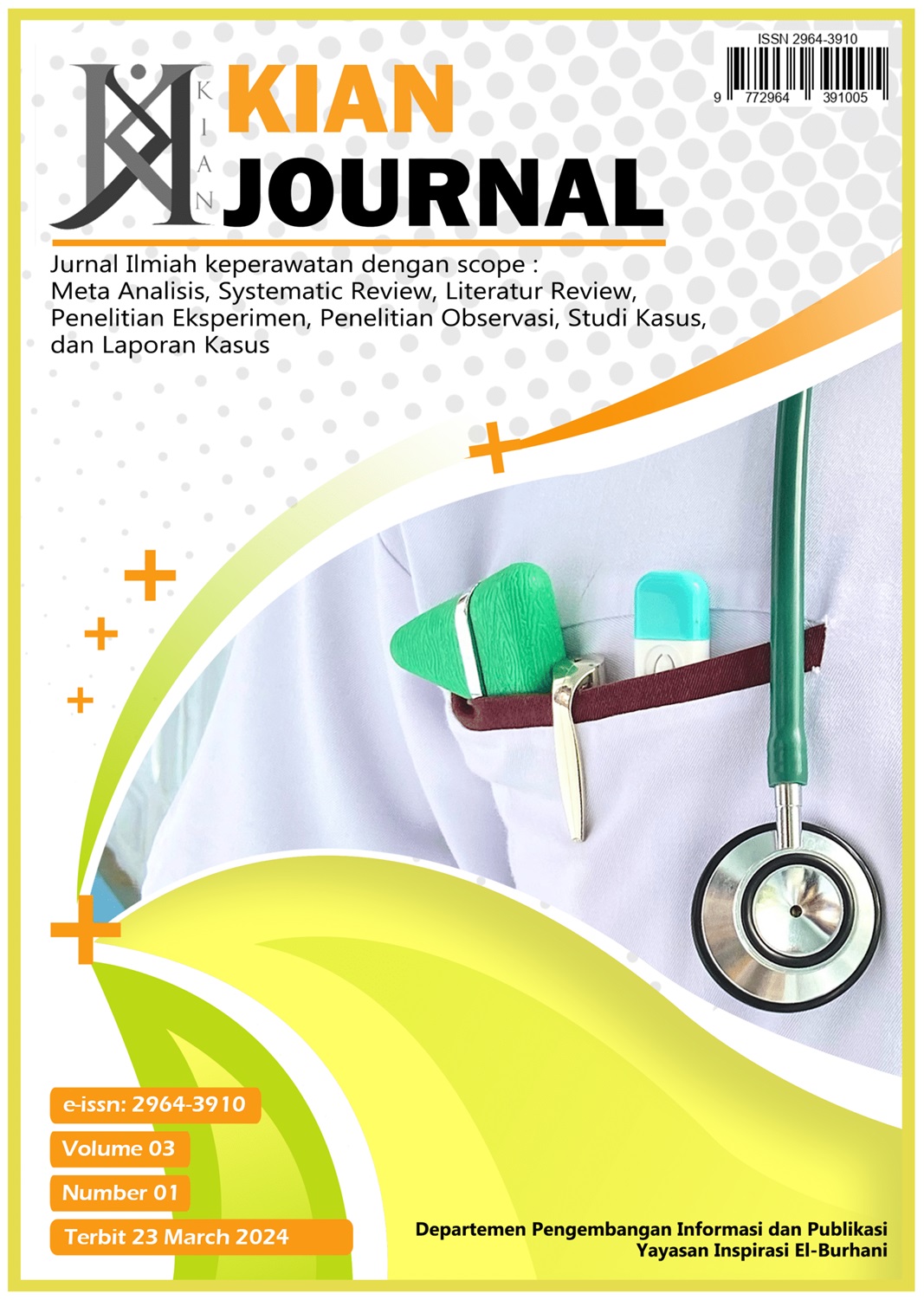The Impact of Stress and Physical Activity on Premenstrual Syndrome Among Junior High School Female Students
DOI:
https://doi.org/10.56359/kian.v3i1.626Keywords:
premenstrual syndrome, stress, physical activity, adolescentsAbstract
Background: Premenstrual syndrome (PMS) is a collection of physical, emotional, and behavioral symptoms that occur during the luteal phase of the menstrual cycle and often disrupt daily activities. Stress and physical activity are among the factors that may influence the occurrence and severity of PMS.
Objective: This study aimed to determine the relationship between stress levels and physical activity with premenstrual syndrome among adolescent girls aged 12–15 years at SMP Negeri 4 Polewali.
Methods: This research employed a quantitative analytic design with a cross-sectional approach. The population included all female students aged 12–15 years at SMP Negeri 4 Polewali. A total of [insert sample size] respondents were selected using proportional stratified random sampling. Data on stress levels were measured using the Perceived Stress Scale (PSS), physical activity levels were assessed using the International Physical Activity Questionnaire (IPAQ), and PMS was evaluated using the Premenstrual Syndrome Questionnaire (PMSQ). Data were analyzed using the Chi-square test to determine the relationship between variables.
Results: The results showed a significant relationship between stress levels and PMS incidence (p < 0.05), where students with high stress levels were more likely to experience PMS. Physical activity also showed a significant relationship with PMS (p < 0.05), with low physical activity being associated with higher PMS incidence.
Conclusion: There is a significant association between stress levels and physical activity with the occurrence of PMS among adolescent girls at SMP Negeri 4 Polewali. These findings suggest the importance of stress management and regular physical activity as preventive strategies for PMS in adolescents.
Downloads
References
Abdollahian, E., Sarhaddi, E., & Kamali, Z. (2019). The effect of aerobic exercise on premenstrual syndrome symptoms in high school girls. Journal of Education and Health Promotion, 8(1), 49. https://doi.org/10.4103/jehp.jehp_420_18
Bahrami, N., Bahrami, S., & Sharif, N. (2020). The association between lifestyle factors and premenstrual syndrome among Iranian adolescent girls. Journal of Obstetrics and Gynaecology Research, 46(3), 425–432. https://doi.org/10.1111/jog.14172
Balikci, A., Ucar, M., & Cengiz, B. (2021). The effect of regular physical activity on premenstrual syndrome symptoms in adolescent girls. Progress in Nutrition, 23(2), e2021106. https://doi.org/10.23751/pn.v23i2.11416
El-Moselhy, E. A., Khalil, O. A., & El-Baz, S. Z. (2022). Prevalence and correlates of premenstrual syndrome among female secondary school students in Egypt. Journal of the Egyptian Public Health Association, 97(1), 1–11. https://doi.org/10.1186/s42506-021-00095-6
Faramarzi, M., Khafri, S., & Salmalian, H. (2018). The effect of 8 weeks of regular aerobic exercise on severity of premenstrual syndrome. Journal of Obstetrics and Gynaecology, 38(7), 940–944. https://doi.org/10.1080/01443615.2018.1443541
Ghodsbin, F., Jahanbin, I., & Sharif, F. (2019). The relationship between perceived stress and premenstrual syndrome in high school girls. Iranian Journal of Nursing and Midwifery Research, 24(3), 196–200. https://doi.org/10.4103/ijnmr.IJNMR_150_17
Hantoushzadeh, S., Golshahi, F., & Shariat, M. (2021). The impact of premenstrual syndrome on school performance among Iranian adolescent girls. BMC Women’s Health, 21, 218. https://doi.org/10.1186/s12905-021-01378-w
Nguyen, H. T., Pham, T. T., & Tran, T. T. (2023). Premenstrual syndrome among Vietnamese adolescents: Prevalence and associated factors. Adolescent Health, Medicine and Therapeutics, 14, 15–24. https://doi.org/10.2147/AHMT.S387949
Noh, J. W., Kim, J., Lee, S. A., & Kwon, Y. D. (2020). Impact of premenstrual syndrome on school attendance and performance in Korean adolescent girls. International Journal of Environmental Research and Public Health, 17(18), 6671. https://doi.org/10.3390/ijerph17186671
Sone, K., Ueno, M., & Oishi, T. (2023). Psychological stress and menstrual symptoms among Japanese female university students. Journal of Obstetrics and Gynaecology Research, 49(4), 1302–1310. https://doi.org/10.1111/jog.15664
Wahyuni, S., Lestari, N., & Andayani, D. (2022). Effectiveness of stress management and physical activity interventions to reduce premenstrual syndrome symptoms in adolescents. International Journal of Adolescent Medicine and Health, 34(6), 1–8. https://doi.org/10.1515/ijamh-2021-0049
Downloads
Published
How to Cite
Issue
Section
License
Copyright (c) 2024 Nur Isriani Najamuddin, Ramdani Nasir, Masyitah Wahab, Nurfadhila

This work is licensed under a Creative Commons Attribution 4.0 International License.














